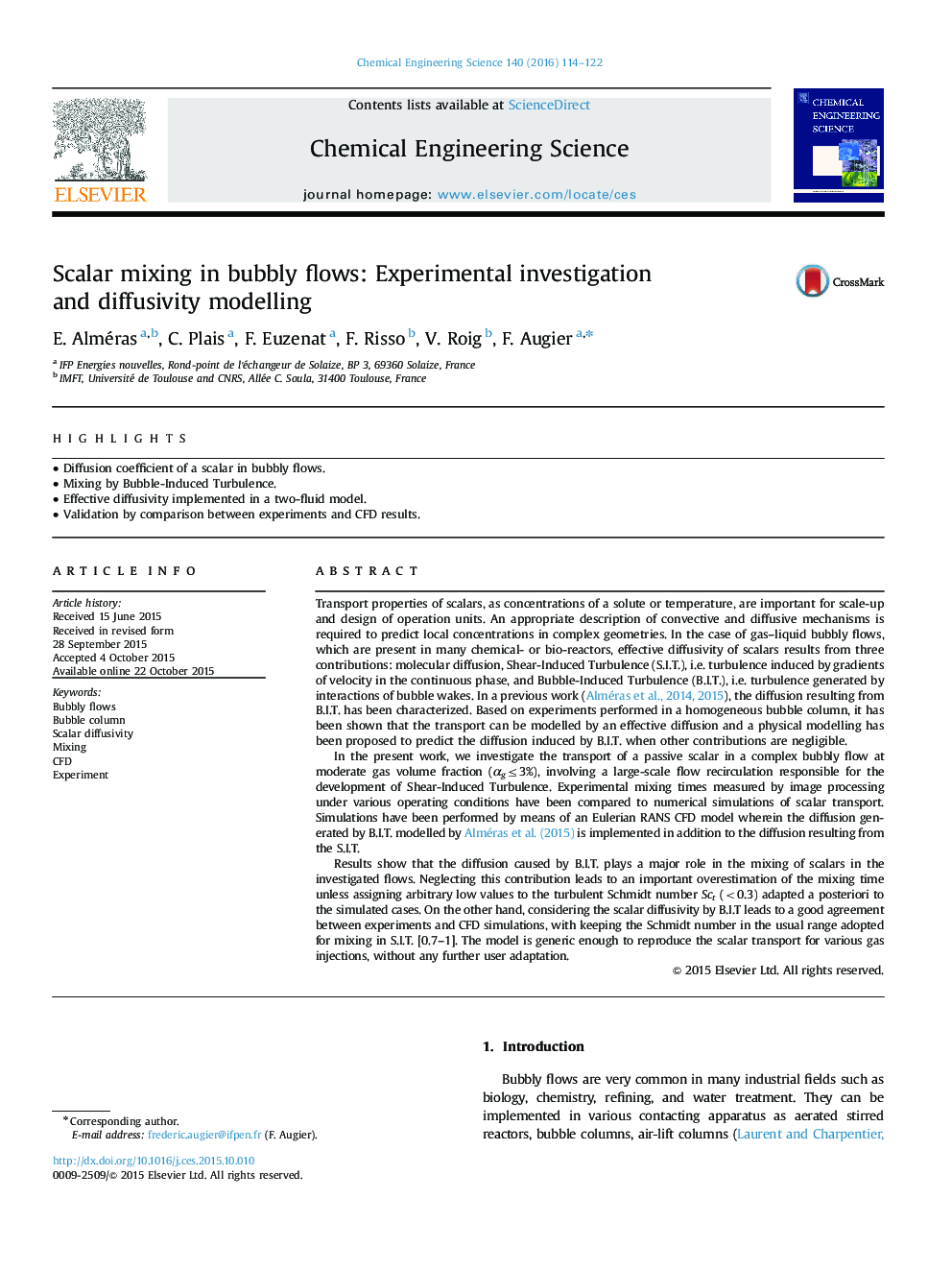| کد مقاله | کد نشریه | سال انتشار | مقاله انگلیسی | نسخه تمام متن |
|---|---|---|---|---|
| 154535 | 456843 | 2016 | 9 صفحه PDF | دانلود رایگان |
• Diffusion coefficient of a scalar in bubbly flows.
• Mixing by Bubble-Induced Turbulence.
• Effective diffusivity implemented in a two-fluid model.
• Validation by comparison between experiments and CFD results.
Transport properties of scalars, as concentrations of a solute or temperature, are important for scale-up and design of operation units. An appropriate description of convective and diffusive mechanisms is required to predict local concentrations in complex geometries. In the case of gas–liquid bubbly flows, which are present in many chemical- or bio-reactors, effective diffusivity of scalars results from three contributions: molecular diffusion, Shear-Induced Turbulence (S.I.T.), i.e. turbulence induced by gradients of velocity in the continuous phase, and Bubble-Induced Turbulence (B.I.T.), i.e. turbulence generated by interactions of bubble wakes. In a previous work (Alméras et al., 2014, 2015), the diffusion resulting from B.I.T. has been characterized. Based on experiments performed in a homogeneous bubble column, it has been shown that the transport can be modelled by an effective diffusion and a physical modelling has been proposed to predict the diffusion induced by B.I.T. when other contributions are negligible.In the present work, we investigate the transport of a passive scalar in a complex bubbly flow at moderate gas volume fraction (αg≤3%), involving a large-scale flow recirculation responsible for the development of Shear-Induced Turbulence. Experimental mixing times measured by image processing under various operating conditions have been compared to numerical simulations of scalar transport. Simulations have been performed by means of an Eulerian RANS CFD model wherein the diffusion generated by B.I.T. modelled by Alméras et al. (2015) is implemented in addition to the diffusion resulting from the S.I.T.Results show that the diffusion caused by B.I.T. plays a major role in the mixing of scalars in the investigated flows. Neglecting this contribution leads to an important overestimation of the mixing time unless assigning arbitrary low values to the turbulent Schmidt number Sct (<0.3) adapted a posteriori to the simulated cases. On the other hand, considering the scalar diffusivity by B.I.T leads to a good agreement between experiments and CFD simulations, with keeping the Schmidt number in the usual range adopted for mixing in S.I.T. [0.7–1]. The model is generic enough to reproduce the scalar transport for various gas injections, without any further user adaptation.
Journal: Chemical Engineering Science - Volume 140, 2 February 2016, Pages 114–122
